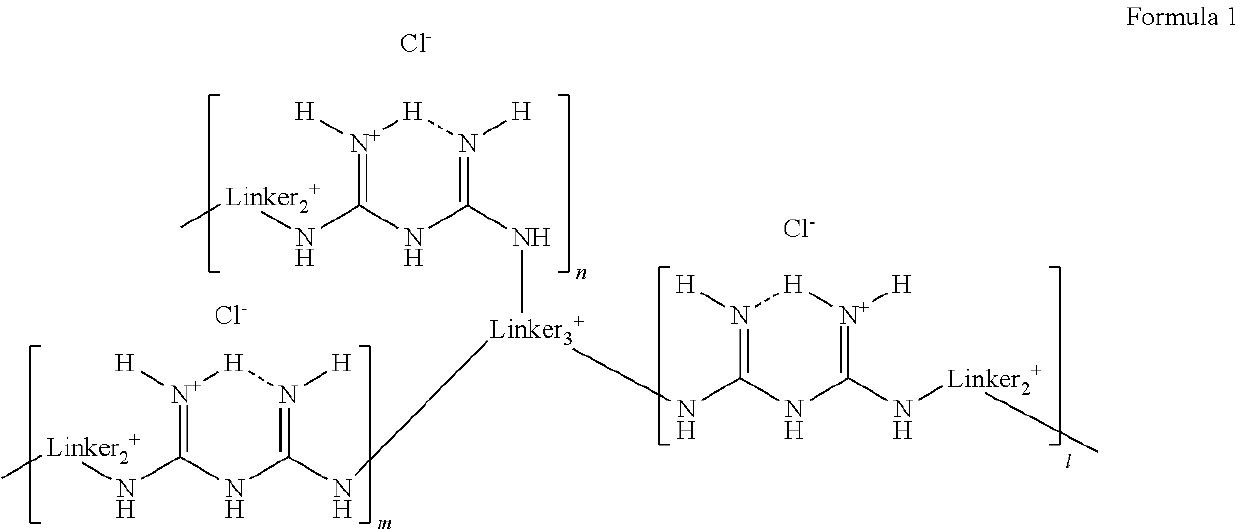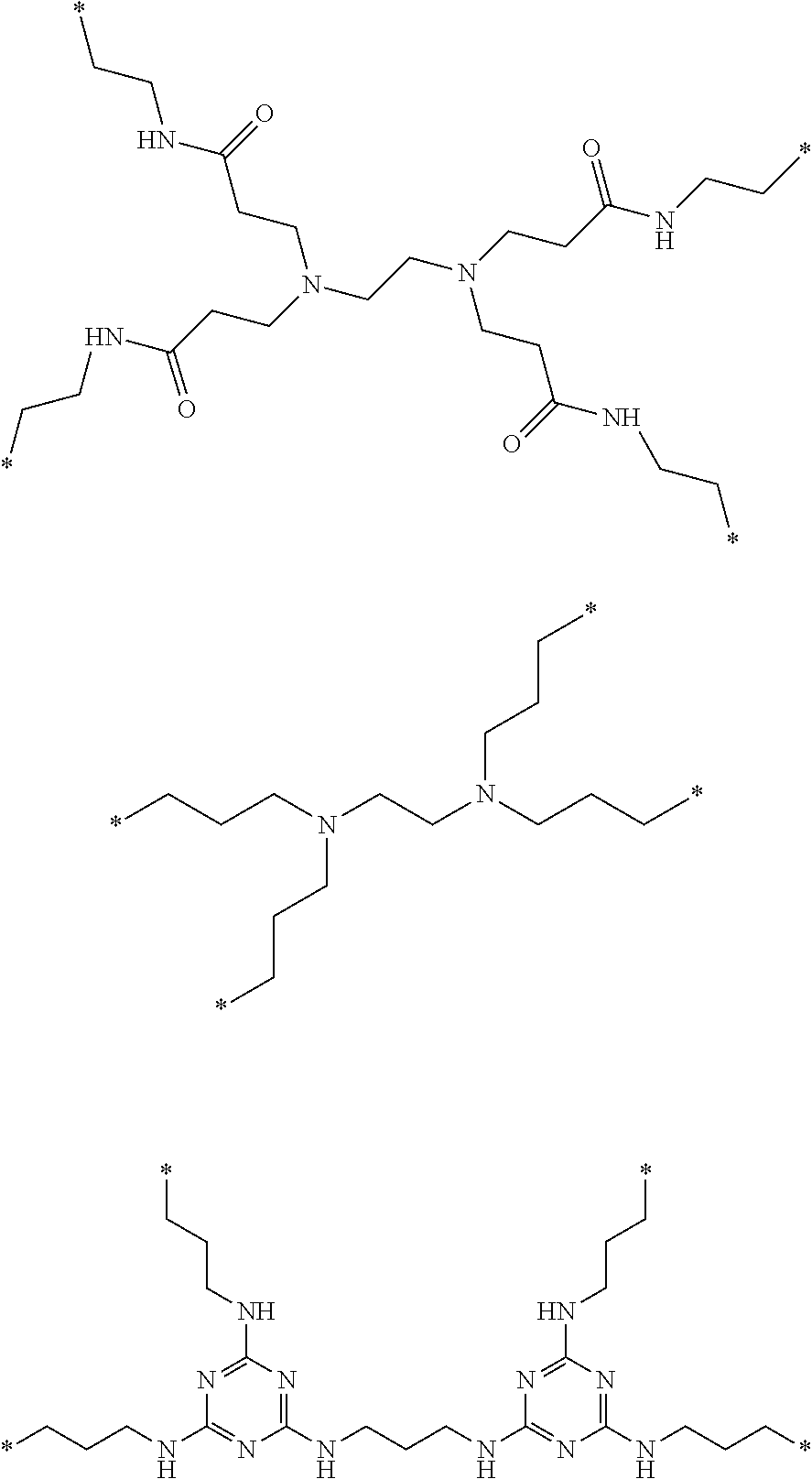Branched polymeric biguanide compounds and their uses
a polymer and polymer technology, applied in the field of biocidal branched polymers comprising polymeric biguanide, can solve the problems of ocular tissues irritation, eye wear or skin irritation, polyhexamethylene biguanide, etc., to enhance ocular safety, enhance antimicrobial efficacy, and enhance antimicrobial efficacy
- Summary
- Abstract
- Description
- Claims
- Application Information
AI Technical Summary
Benefits of technology
Problems solved by technology
Method used
Image
Examples
example 1
[0025]
example 2
[0026]
[0027]The biocides of the present invention have broad spectrum of antimicrobial activity and can be used in many applications including ophthalmic solutions. The ophthalmic solutions of the present invention can be formulated in various compositions, particularly as disinfectants in contact lens care products and as preservatives in cosmetic, ophthalmic, nasal or otic compositions, and are especially suitable for use in ophthalmic compositions such as artificial tears or topical ophthalmic pharmaceutical preparations. The types of compositions which may be preserved by the compounds of formula (I) include: ophthalmic pharmaceutical compositions, such as those described below; otic pharmaceutical compositions, such as topical compositions used in the treatment of bacterial infections or inflammation of the ear; dermatological compositions, such as anti-inflammatory compositions, as well as shampoos and other cosmetic compositions; and various other types of pharmaceutical comp...
PUM
| Property | Measurement | Unit |
|---|---|---|
| pH | aaaaa | aaaaa |
| pH | aaaaa | aaaaa |
| molecular weight | aaaaa | aaaaa |
Abstract
Description
Claims
Application Information
 Login to View More
Login to View More - R&D
- Intellectual Property
- Life Sciences
- Materials
- Tech Scout
- Unparalleled Data Quality
- Higher Quality Content
- 60% Fewer Hallucinations
Browse by: Latest US Patents, China's latest patents, Technical Efficacy Thesaurus, Application Domain, Technology Topic, Popular Technical Reports.
© 2025 PatSnap. All rights reserved.Legal|Privacy policy|Modern Slavery Act Transparency Statement|Sitemap|About US| Contact US: help@patsnap.com



